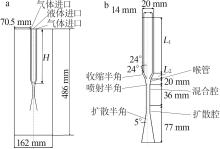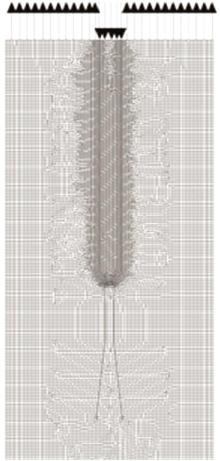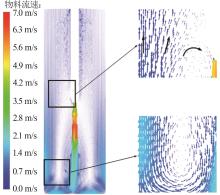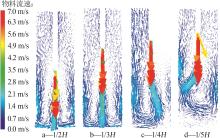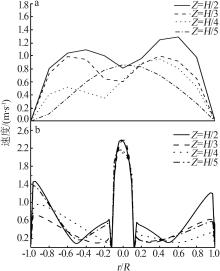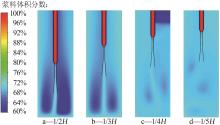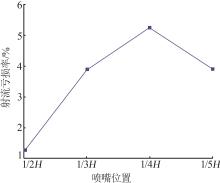| 1 |
陈明成.碱式碳酸镁的制备工艺及其热分析的研究[D].淮南:安徽理工大学,2019.
|
|
CHEN Mingcheng.Study on preparation technology and thermal analysis of basic magnesium carbonate[D].Huainan:Anhui University of Science & Technology,2019.
|
| 2 |
付梦源,程芳琴,程文婷,等.沉淀结晶法制备不同形貌的碳酸镁水合物[J].盐业与化工,2015,44(12):24-29.
|
|
FU Mengyuan, CHENG Fangqin, CHENG Wenting,et al.Preparation of magnesium carbonate hydrates with different morphology by precipitation method[J].Journal of Salt and Chemical Industry,2015,44(12):24-29.
|
| 3 |
HOLLINGBERY L A, HULL T R.The fire retardant behaviour of huntite and hydromagnesite:A review[J].Polymer Degradation and Stability,2010,95(12):2213-2225.
|
| 4 |
HOLLINGBERY L A, HULL T R.The fire retardant effects of huntite in natural mixtures with hydromagnesite[J].Polymer Degradation and Stability,2012,97(4):504-512.
|
| 5 |
郑楠,田朋,朱兴坤,等.碱式碳酸镁基复合阻燃剂的制备及其阻燃性能研究[J].无机盐工业,2021,53(2):47-50.
|
|
ZHENG Nan, TIAN Peng, ZHU Xingkun,et al.Preparation and flame retardant properties of basic magnesium carbonate composite flame retardant[J].Inorganic Chemicals Industry,2021,53(2):47-50.
|
| 6 |
张果泰,海春喜,周园.碱式碳酸镁的制备方法及应用现状[J].盐湖研究,2022,30(3):131-138.
|
|
ZHANG Guotai, Chunxi HAI, ZHOU Yuan.Preparation and application of basic magnesium carbonate[J].Journal of Salt Lake Research,2022,30(3):131-138.
|
| 7 |
ZHANG Peng,ZARDÁN GÓMEZ DE LA TORRE T, FORSGREN J,et al.Diffusion-controlled drug release from the mesoporous magnesium carbonate upsalite® [J].Journal of Pharmaceutical Sciences,2016,105(2):657-663.
|
| 8 |
刘兴,刘润静,赵华,等.碱式碳酸镁微观结构对视比容影响[J].无机盐工业,2019,51(11):42-45.
|
|
LIU Xing, LIU Runjing, ZHAO Hua,et al.Effect of microstructure of basic magnesium carbonate on apparent specific volume[J].Inorganic Chemicals Industry,2019,51(11):42-45.
|
| 9 |
袁春华,李海民.碱式碳酸镁的应用及合成方法[J].盐湖研究,2005,13(2):40-44,59.
|
|
YUAN Chunhua, LI Haimin.Study on synthetic methods and application of basic magnesium carbonate[J].Journal of Salt Lake Research,2005,13(2):40-44,59.
|
| 10 |
张向京,赵飒,张志昆,等.加压碳化法制备碱式碳酸镁新工艺研究[J].无机盐工业,2011,43(10):39-41.
|
|
ZHANG Xiangjing, ZHAO Sa, ZHANG Zhikun,et al.New process for preparation of hydromagnesite by carbonization at elevated pressure[J].Inorganic Chemicals Industry,2011,43(10):39-41.
|
| 11 |
刘雪芝,于凤芹,王海增.常压碳化法制备碳酸镁水合物的新工艺[J].无机盐工业,2015,47(10):31-34.
|
|
LIU Xuezhi, YU Fengqin, WANG Haizeng.New process for preparation of magnesium carbonate hydrate by carbonization at normal pressure[J].Inorganic Chemicals Industry,2015,47(10):31-34.
|
| 12 |
王卫兵,赵跃强,孙鸿.碱式碳酸镁生产的最佳工艺条件试验研究[J].山东化工,2016,45(3):22-24.
|
|
WANG Weibing, ZHAO Yueqiang, SUN Hong.Study on the optimum technology condition in the production of basic magnesium carbonate[J].Shandong Chemical Industry,2016,45(3):22-24.
|
| 13 |
满瑞林,余嘉耕,汤义武,等.超细碳酸钙生产新设备[J].化工装备技术,1998,19(2):1-4.
|
|
MAN Ruilin, YU Jiageng, TANG Yiwu,et al.New equipment for producing superfine calcium carbonate[J].Chemical Equipment Technology,1998,19(2):1-4.
|
| 14 |
张明,沈政昌,史帅星,等.基于数值计算的浮选机内颗粒
|
|
流动行为研究[J].有色金属(选矿部分),2021(4):111-115, 137.
|
|
ZHANG Ming, SHEN Zhengchang, SHI Shuaixing,et al.Study on flow behavior of particles in flotation machine based on numerical calculation[J].Nonferrous Metals(Mineral Processing Section),2021(4):111-115,137.
|
| 15 |
江帆.Fluent高级应用与实例分析[M].2版.北京:清华大学出版社,2020.
|
| 16 |
张博.喷射器与太阳能喷射式制冷系统研究[D].大连:大连理工大学,2002.
|
|
ZHANG Bo.Study on ejector and solar ejector refrigeration system[D].Dalian:Dalian University of Technology,2002.
|
| 17 |
于耀.蒸汽喷射器的结构优化及多喷嘴结构的数值模拟[D].济南:山东大学,2021.
|
|
YU Yao.Structural optimization of steam ejector and numerical simulation of multi-nozzle structure[D].Jinan:Shandong University,2021.
|
| 18 |
杨雅楠.喷射器关键结构影响机理及新型喷射器性能分析[D].徐州:中国矿业大学,2020.
|
|
YANG Yanan.Influence mechanism of key structure of injector and performance analysis of new injector[D].Xuzhou:China University of Mining and Technology,2020.
|
 ), LI Shengdong, WANG Dexi, CHU Fuzhou, SHAO Lixin
), LI Shengdong, WANG Dexi, CHU Fuzhou, SHAO Lixin
